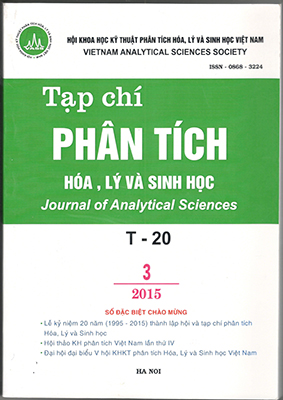REMOVAL OF PHOSPHATE FROM AQUEOUS SOLUTION BY USING ACTIVATED RED MUD
Abstract
Red mud is a highly alkaline waste residue of alumina industry using the Bayer process ofalumina production in bauxite exploitation and alumina industry. In this study, Alumin LamDong, Tay Nguyen red mud was obtained then characterized and investigated to developeffective adsorbent to remove phosphate (PO43-) from aqueous solution. It was found to havehigh metal oxides content, mainly Fe2O3, Al2O3, SiO2 and TiO2 which are active componentsfor the adsorption of heavy metal cations and anions. The characterization of red mudperformed by XRD and SEM shows a significant powder structure with very high increase ofsurface area of almost 1.5 times after the activation by heat and acid treatment. The factorsinfluencing the adsorption including acid concentration, equilibrium pH and contact timewere also investigated. The results show that the adsorption properties of activated red muddepend on pH values and acid concentration, the amount of red mud used and contact time.The red mud with heat treatment at 800°C and HCl 1M after 4 hours shows the highestadsorption capacity. The percentage of phosphate removal was found to increase graduallywith the increase of pH and reach the maximum when pH at 3, then decrease significantly.After the contact time of 1.5 hours, the maximum adsorption capacity of PO43- ions is 270.27mg/g corresponding to qmax (P) of 88.2 mg/g while the phosphate removal percentage reachesabout 95%. The Langmuir isotherm model fits well the phosphate adsorption showing onelayer adsorption property.
Keywords: red mud, activated red mud, bauxite residue, phosphate adsorption, phosphateremoval, Langmuir isotherm

